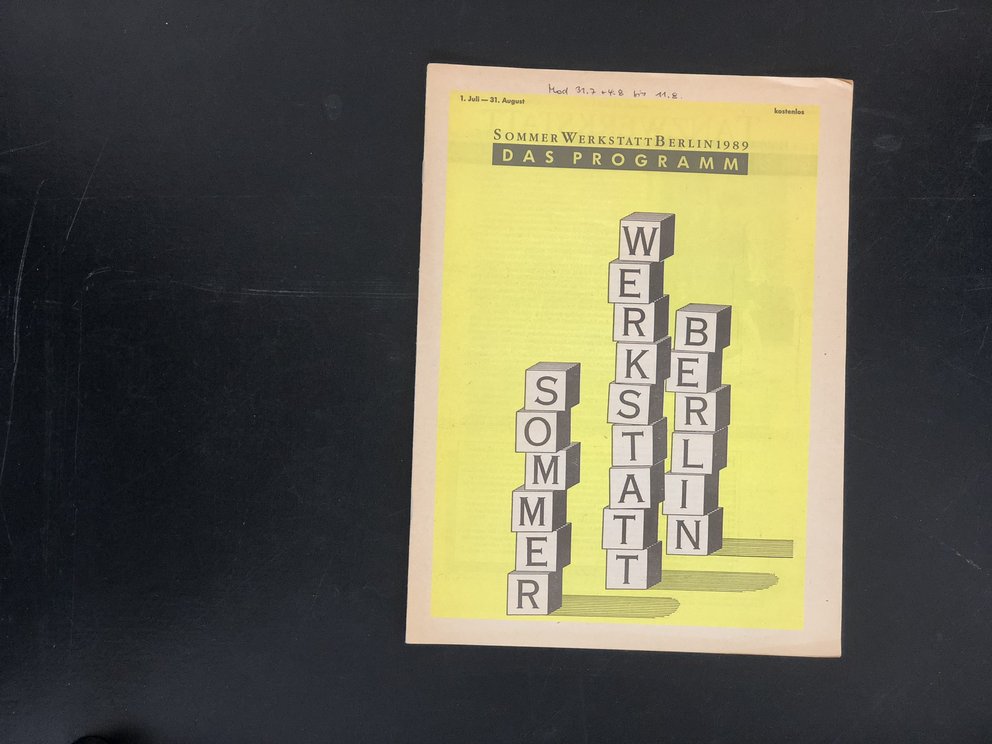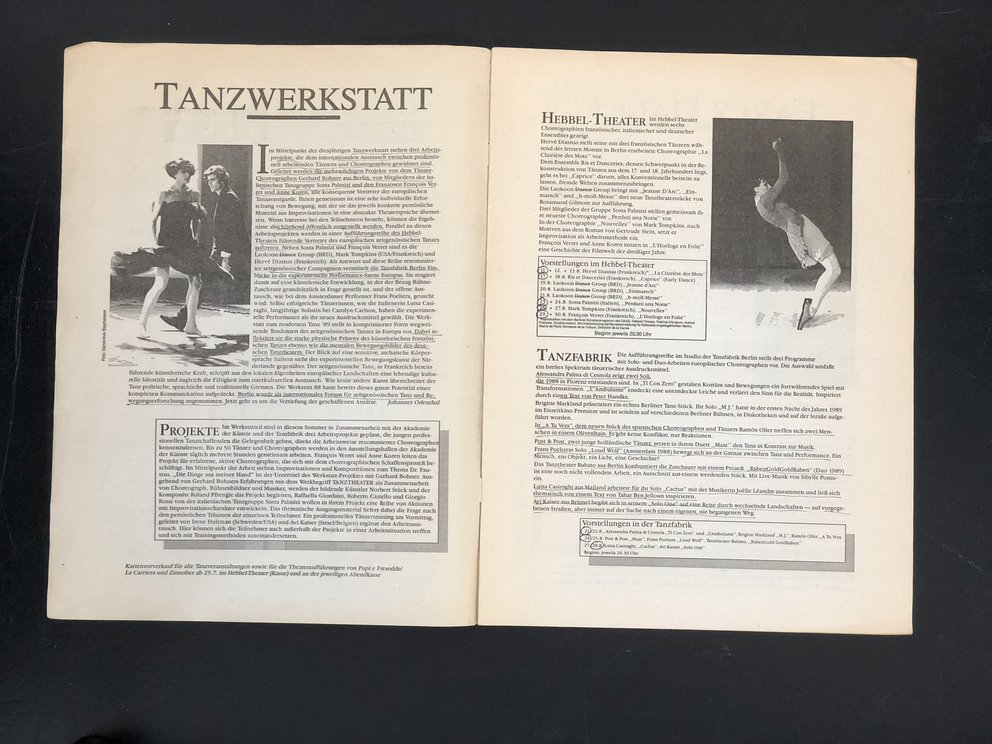Everything began for the TanzWerkstatt on 4 June 1988. West Berlin was presenting itself as the European Capital of Culture (E 88), for which programme director Nele Hertling created a large, open workshop for the arts – including dance. Young dance groups from Europe were invited to Berlin, none of whom – something Hertling always stresses – knew each other. Neither dancers nor choreographers had money to travel, and digital communication was non-existent.
TanzWerkstatt
Johannes Odenthal: “Die Frage nach dem europäischen Tanz”, tanz aktuell, 7/8 1988.
At the end of a successful first TanzWerkstatt, Hertling wrote a position paper for the future:
The fact that TanzWerkstatt 1989 was able to continue as Tanz im August was made possible by Hertling’s tireless lobbying and her appointment to the role of artistic director of Hebbel-Theater Berlin GmbH at the end of 1988.
Quote Nele Hertling
TanzWerkstatt 1989 was the first edition of a ‘joint project’, with the Akademie der Künste, Hebbel-Theater, SommerWerkstatt, Tanzfabrik, and Tanz Initiative Berlin e.V. all banding together to publish a programme booklet. On the cover, the festival’s name appeared for the first time, which quickly established itself as a kind of trademark.
The idea behind calling TanzWerkstatt ‘Tanz im August’ was simple. In summer, all of Berlin’s theatres and opera houses were closed – which many people found absurd – and in August (usually after the end of the school holidays) there were no other event organisers to compete with. Ulrike Becker, who Hertling had employed for the Capital of Culture programme, organised the international TanzWerkstatt 1988 in her ‘home office’ due to lack of space in the Spicherstraße offices, working closely with André Thériault as well as Dieter Heitkamp and Jacalyn Carley, co-founders of Tanzfabrik.
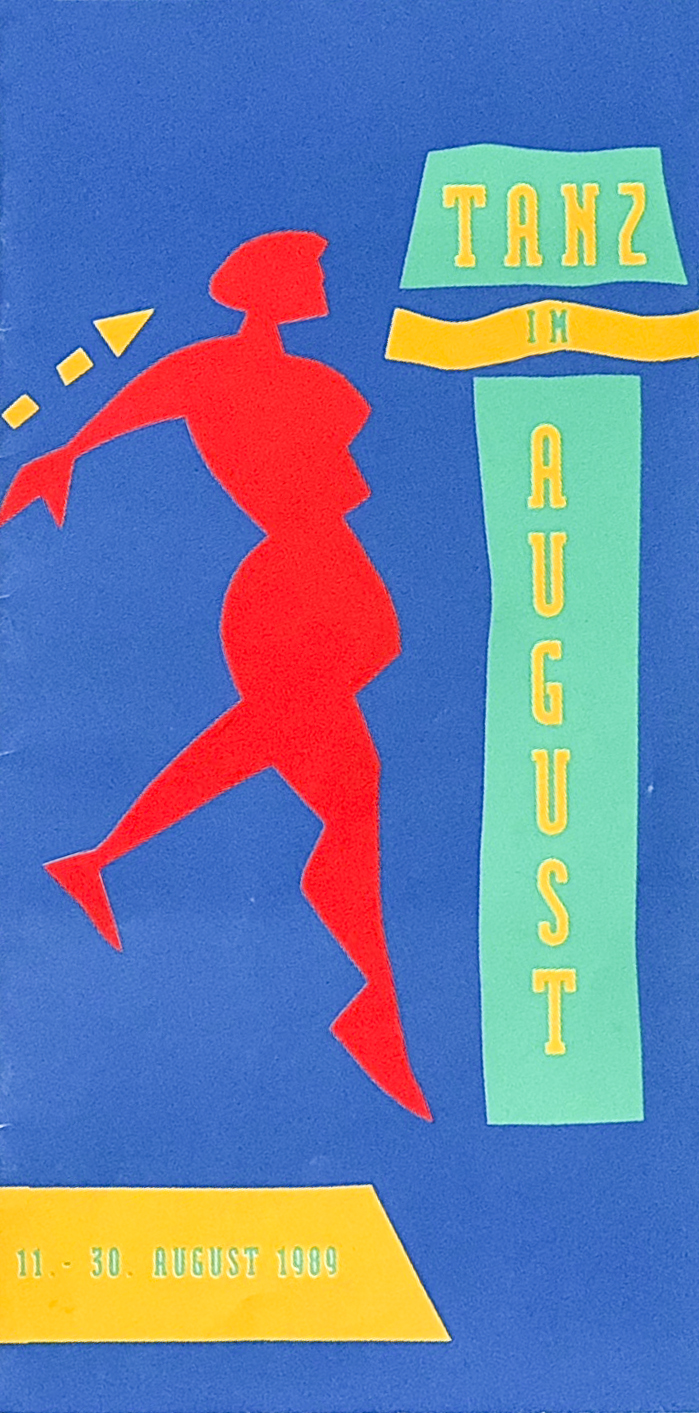
Quote Jacalyn Carley
In 1989, TanzWerkstatt moved into an office on Großbeerenstraße, where Ulrike Becker and André Thériault then carried on their work of facilitating successful work exchanges between Berlin-based and European choreographers.
Katrin Bettina Müller: “Von Kopf bis Fuß”, tip, 17/89.
While Hertling was busy inviting bigger and bigger dance companies to the Hebbel-Theater, Becker and Thériault organised workshops, projects, and studio performances, primarily at Tanzfabrik. In 1992, TanzWerkstatt Berlin moved into Podewil and became part of the newly-formed, state-owned Berliner Kulterveranstaltungs-GmbH (BKV). The converted former palace on Klosterstraße allowed them to put on their own events and provided a measure of independence.
TanzWerkstatt concept paper 1997
In 1998, Podewil underwent an in-house renovation and extension, and was restructured in terms of personnel:
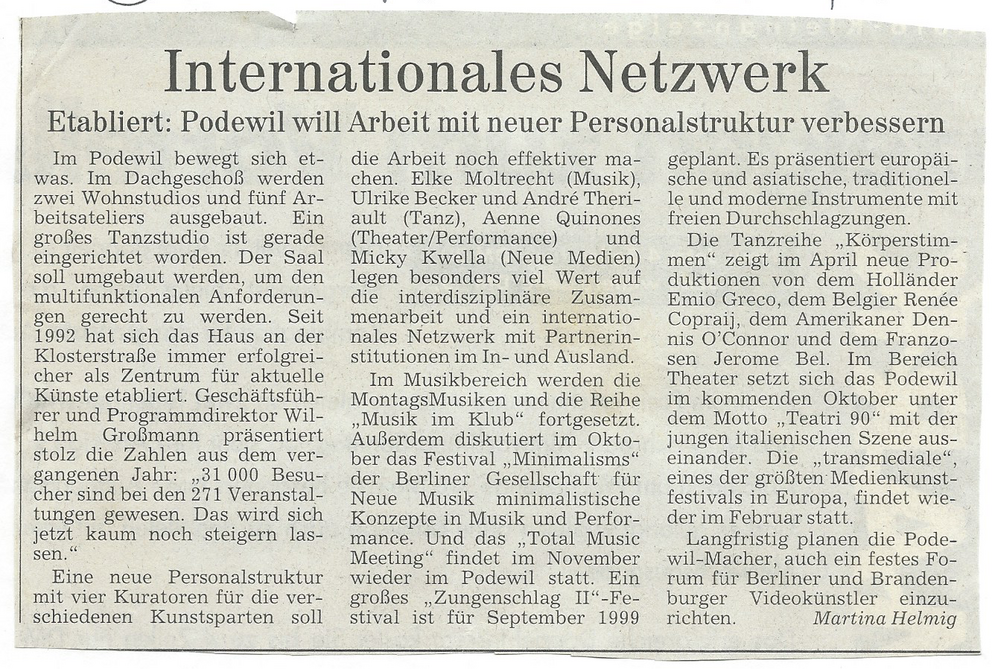
With Hertling’s departure from Hebbel-Theater in 2003, the complete budget for the festival programme was initially awarded to TanzWerkstatt Berlin. This was a solution that Matthias Lilienthal, the new director of Hebbel-Theater Berlin GmbH, was unwilling to accept. He convinced Berlin Secretary for Culture André Schmitz to split the budget 50/50 between the Hebbel-Theater and TanzWerkstatt.
This new form of co-operation between the two promoters, with both on equal footing, had consequences:
“This gave us the opportunity to revamp the festival into the format that it has today. We were able to expand the event programme to cover the entire city, and to include a number of very different formats; to organise fringe events (Sommerbar, a cinema programme, outdoor and site-specific events, interventions and discussions) as well as present large productions at the Haus der Festspiele, as well as the Volksbühne, the Schaubühne, and the Akademie der Künste. We were also able to develop international co-productions and attract new international partners. Through this diverse programming, and by using locations all around the city in all of their various shapes and sizes, we were able to gain new audiences and get both the local and international scene more strongly involved.” (Ulrike Becker)
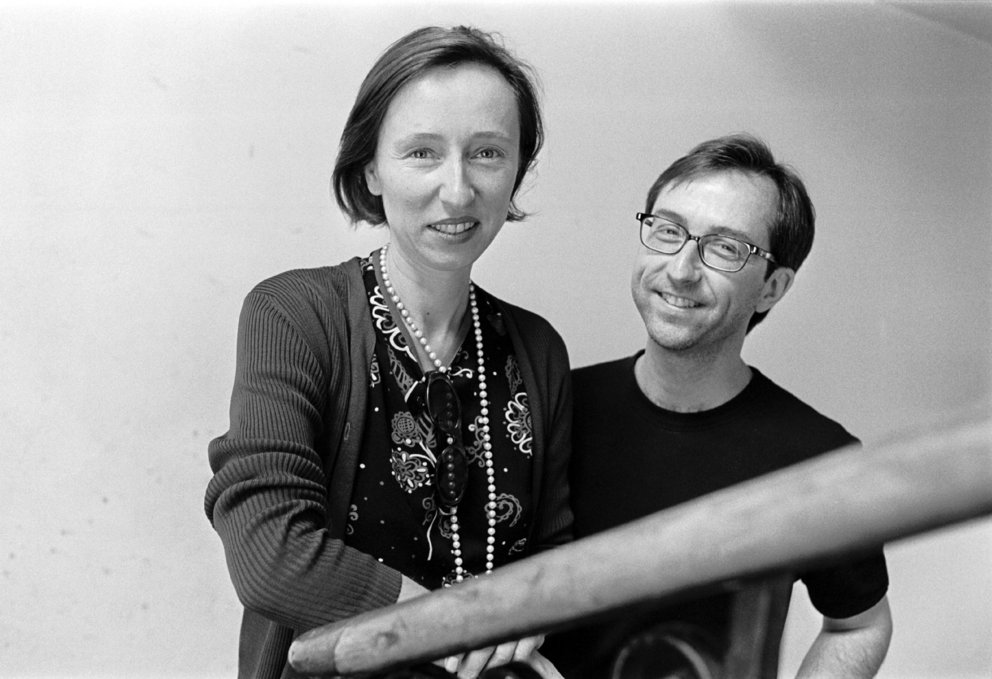
Despite this, the new configuration encountered some difficulties. Balancing everyone’s interests was a tricky feat that wasn’t always successful, and the ever-changing financial problems didn’t make the task any easier. In 2012, there was a dispute about the future of the festival. Becker and Thériault wrote a paper that had circulated around the city before the beginning of the festival.
In an interview with Jürgen Liebling near the end of the 2012 festival for the Deutschlandradio programme Fazit, Becker explained her motives:
Quote Jürgen Liebing/Ulrike Becker (Fazit, 20.8.2012)
After intense discussions, there was ultimately a permanent separation, which was – like most separations – a painful one. What followed was the dissolution of TanzWerkstatt and the exit of Becker and Thériault, the two long-serving curators. The suggestion to “think beyond the limitations of the capital” (Dorion Weickmann in SZon 27.08.2012), to establish a kind of Berlinale of dance, never took hold, for reasons the Berlin Secretary for Culture Andre Schmitz made clear: “Tanz im August is a Berlin festival, and that’s how it will stay.” (see previous citation)
In the meantime, Schmitz had also made some personnel changes that would shape the future of the festival. In 2012, Annemie Vanackere, Matthias Lilienthal’s successor, took over not only HAU Hebbel am Ufer, but also Tanz im August. Since then, the festival has been run by an artistic management team that acts on behalf of Hebbel-Theater Berlin GmbH. Virve Sutinen took over the artistic direction of the festival in autumn 2013.


